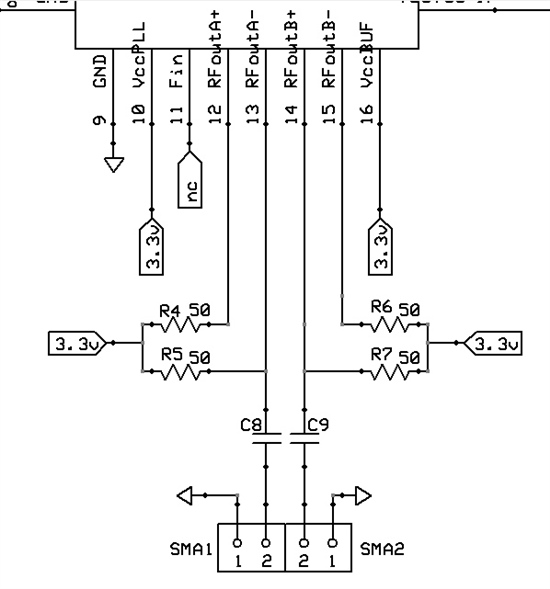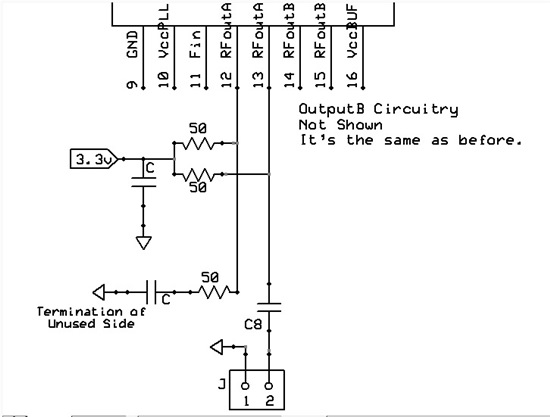I am prototyping a frequency synthesizer circuit with the LMX2581 Frequency Synthesizer IC.
Sometimes the IC generates the correct frequency, sometimes it does not.
In particular, when sending commands to the IC, it does not seem to be possible to set the OUTB_MUX and OUTA_MUX bits in Register #5 in order to bypass the VCO divider. On some of the higher frequencies (>1880 MHz), it appears that the desired frequency is always divided by two.
When trying to set the other high frequencies the IC usually outputs a low frequency around 904 MHz.
I'm on version D of the datasheet which apparently corrects some mistakes in version C of the datasheet.



